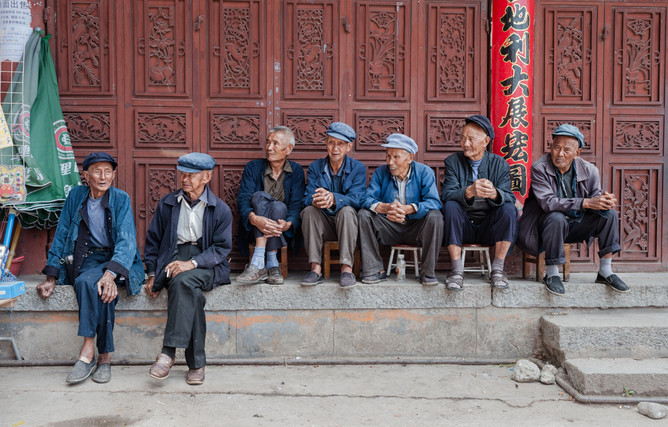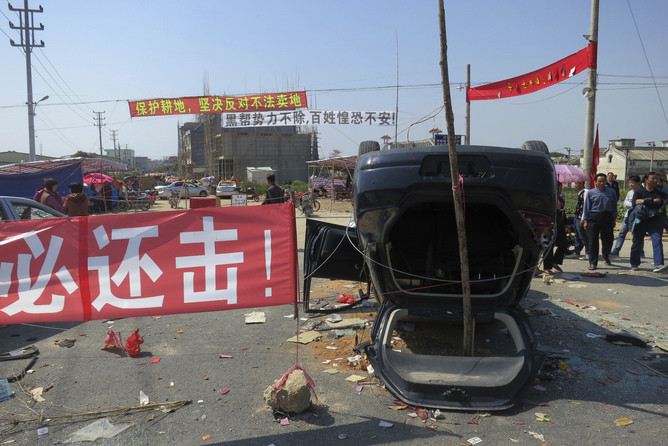Six reasons why China's economy is weaker than you think

The UK has rolled out the red carpet for Chinese president Xi Jinping on his five-day official visit. He is being given the royal treatment, including a stay at Buckingham Palace, a ride in a state carriage along The Mall and several banquets. The trip will also include plenty of time with the British prime minister, David Cameron, who is keen to discuss the trade and investment that the UK hopes to secure from the visit.
Britain’s pivot to China is largely based on its economic strength. And yet there is cause for concern. Having been the locomotive for global growth following the financial crisis in 2008, Chinese growth has now slowed and its economy is looking increasingly fragile. The latest GDP figures came in at just under 7%, significantly down from the astounding annual rate of more than 9% per year between 1990 and 2010.
Exports from China have declined, and exports to China must battle against the depreciating yuan. China’s slowdown has depressed global commodity prices, adversely affecting big exporting countries such as Brazil and Russia.
Some leading economists have been very optimistic about China. Nobel Laureate Robert Fogel published an article in 2010 that predicted that China’s GDP will grow at an average annual rate of more than 8% until 2040, when its GDP per capita would be twice that projected for Europe and similar to that in the United States. Fogel used a textbook method of analysis to predict an unrelenting upward path.
But as countries grow, their service sectors tend to increase as a proportion of output and employment. Rates of growth of productivity in services tend to be much lower than in manufacturing or agriculture. Hence, in any economy, growth rates are likely to slow down through changes in economic structure. There are several other reasons why China’s economic growth is set to stall.
1. Demographic shifts
China will experience an adverse demographic shift in the coming decades. Three decades of the one-child policy has reduced the number of adults of working age. The recent and ongoing relaxation of that policy, plus a big decline in infant mortality, increases the number of children. Older people are living longer, due to improved healthcare and reduced poverty. Hence the average number of children and old people, which needs to be supported by each person in work, is set to increase dramatically.

2. Chinese GDP per capita is still low
GDP is way below that of the US and other developed countries. World Bank Figures for 2014 put China’s GDP per capita at about 24% of that in the US. In the 20th century, only five countries managed to grow from 24% or less of US GDP per capita to 60% or more of US GDP per capita. They were Japan, Taiwan, South Korea, Singapore and Hong Kong. China still has a long way to go.
3. Lack of democracy
While there is some evidence that autocratic governments can help economic development at lower stages of development, particularly by promoting basic industry and infrastructure, there is strong evidence that democratic institutions are much more suited to higher levels of development. Notably, when Japan, Taiwan and South Korea reached about 45% of US GDP per capita, they were established or emerging democracies. A transition to a more democratic government may be necessary as China develops, but this would be very difficult to achieve – and could be highly disruptive.
4. Lack of openness
A democratic government is but one part of a constellation of vital institutions. As Nobel Laureate Douglass North and his colleagues have argued, dynamic modern economies need checks, balances and countervailing power to minimise arbitrary confiscation by the state. Legal systems have to develop significant autonomy from the political elite. In my book Conceptualizing Capitalism I show that absolute GDP per capita in a sample of 97 countries is strongly correlated with absence of corruption and openness of government. China is not an outlier in this test.
5. Problems with land and property rights

China’s population is divided into two classes. Chinese citizens are registered with either an urban or rural classification, depending on where they are born. Urban registrants have better education and health services.
Many rural registrants, meanwhile, have rights to the use of land. But these are often anulled after local party officials are bribed by business speculators and sell the land for profit. Frequent local protests result and the whole system of land use is in dire need of radical reform. Currently it fosters corruption and inhibits the skill development of half of the Chinese population.
6. Lack of homegrown talent
Although there are many small firms in China, there are still few mainland-registered large firms. Barry Naughton has noted that of the top ten firms in China exporting high-tech products, nine were foreign. Offshore registration is understandable, because fear of state sequestration persists in a country that did not recognise private property rights in its constitution until 2007. China’s financial system is very heavily concentrated in state hands, with punitive penalties on private lending.
Thus, there are weighty institutional and demographic drags on further rapid growth in China, especially as it enters intermediate levels of economic development that are ill-suited to the continuance of a one-party state. China can succeed, but only through massive and potentially destabilising reform of its political and economic institutions. We should not be surprised by even lower growth rates in the future.
Geoffrey M. Hodgson, Research Professor, Hertfordshire Business School, University of Hertfordshire
This article was originally published on The Conversation. Read the original article.




















